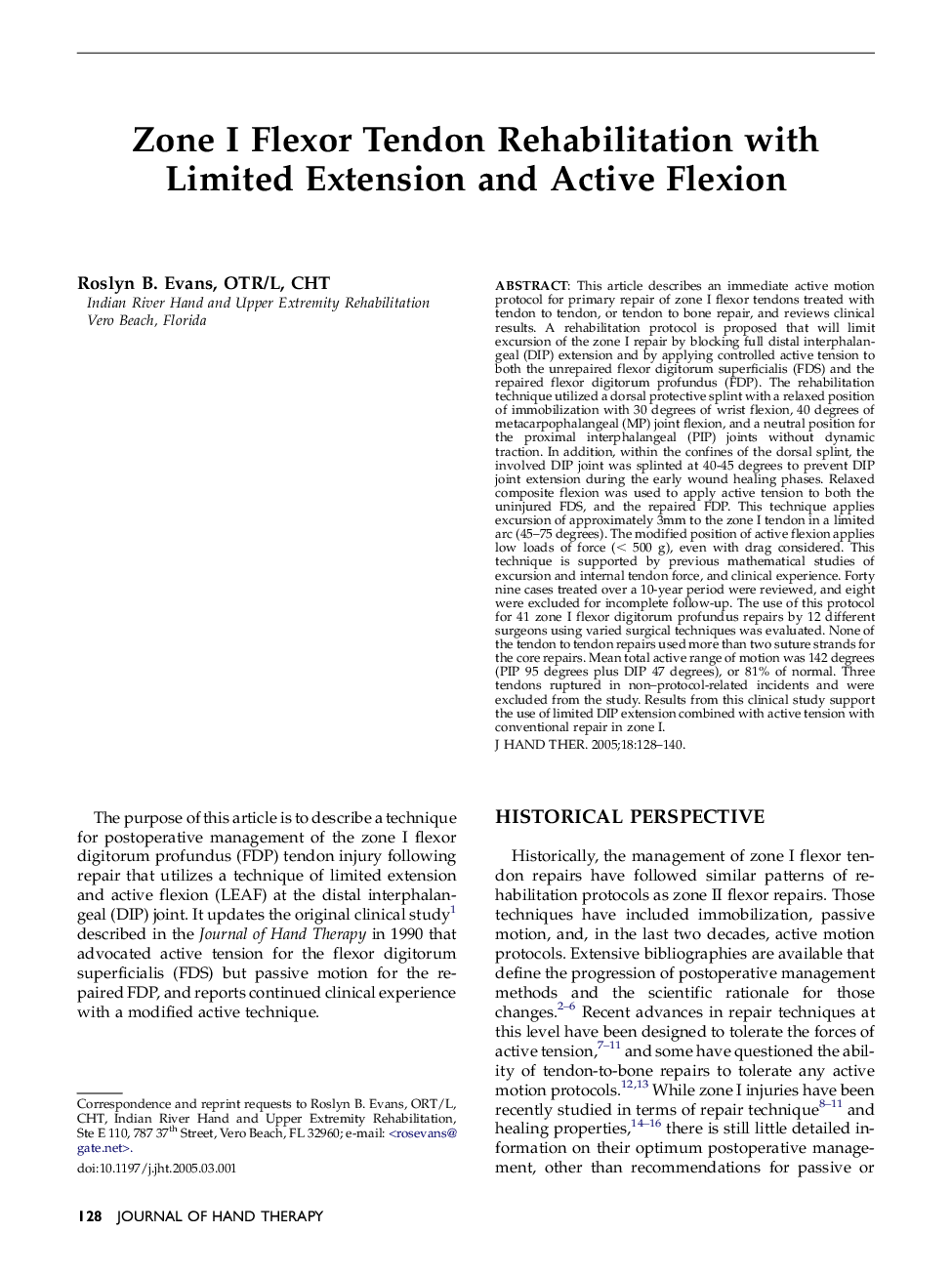| کد مقاله | کد نشریه | سال انتشار | مقاله انگلیسی | نسخه تمام متن |
|---|---|---|---|---|
| 9075128 | 1143758 | 2005 | 13 صفحه PDF | دانلود رایگان |
عنوان انگلیسی مقاله ISI
Zone I Flexor Tendon Rehabilitation with Limited Extension and Active Flexion
دانلود مقاله + سفارش ترجمه
دانلود مقاله ISI انگلیسی
رایگان برای ایرانیان
موضوعات مرتبط
علوم پزشکی و سلامت
پزشکی و دندانپزشکی
ارتوپدی، پزشکی ورزشی و توانبخشی
پیش نمایش صفحه اول مقاله

چکیده انگلیسی
This article describes an immediate active motion protocol for primary repair of zone I flexor tendons treated with tendon to tendon, or tendon to bone repair, and reviews clinical results. A rehabilitation protocol is proposed that will limit excursion of the zone I repair by blocking full distal interphalangeal (DIP) extension and by applying controlled active tension to both the unrepaired flexor digitorum superficialis (FDS) and the repaired flexor digitorum profundus (FDP). The rehabilitation technique utilized a dorsal protective splint with a relaxed position of immobilization with 30 degrees of wrist flexion, 40 degrees of metacarpophalangeal (MP) joint flexion, and a neutral position for the proximal interphalangeal (PIP) joints without dynamic traction. In addition, within the confines of the dorsal splint, the involved DIP joint was splinted at 40-45 degrees to prevent DIP joint extension during the early wound healing phases. Relaxed composite flexion was used to apply active tension to both the uninjured FDS, and the repaired FDP. This technique applies excursion of approximately 3mm to the zone I tendon in a limited arc (45-75 degrees). The modified position of active flexion applies low loads of force (< 500 g), even with drag considered. This technique is supported by previous mathematical studies of excursion and internal tendon force, and clinical experience. Forty nine cases treated over a 10-year period were reviewed, and eight were excluded for incomplete follow-up. The use of this protocol for 41 zone I flexor digitorum profundus repairs by 12 different surgeons using varied surgical techniques was evaluated. None of the tendon to tendon repairs used more than two suture strands for the core repairs. Mean total active range of motion was 142 degrees (PIP 95 degrees plus DIP 47 degrees), or 81% of normal. Three tendons ruptured in non-protocol-related incidents and were excluded from the study. Results from this clinical study support the use of limited DIP extension combined with active tension with conventional repair in zone I.
ناشر
Database: Elsevier - ScienceDirect (ساینس دایرکت)
Journal: Journal of Hand Therapy - Volume 18, Issue 2, AprilâJune 2005, Pages 128-140
Journal: Journal of Hand Therapy - Volume 18, Issue 2, AprilâJune 2005, Pages 128-140
نویسندگان
Roslyn B. OTR/L, CHT,